Clearer views of a new stealthy Chinese trimaran uncrewed surface vessel (USV) have emerged, highlighting a number of interesting features, including a vertical launch system (VLS) array and aft-end flight deck for drone helicopters.
New images of the stealthy USV, which look to have been taken at or near ground level, first began circulating online last week. A surge of interest in the drone ship followed its appearance in high-resolution satellite imagery of Guangzhou Shipyard International (GSI) facilities on Longxue Island, just southeast of the city of Guangzhou, earlier in the year. The same imagery also revealed a still mysterious new class of Chinese ship with a large open flight deck. You can read our report on it here.
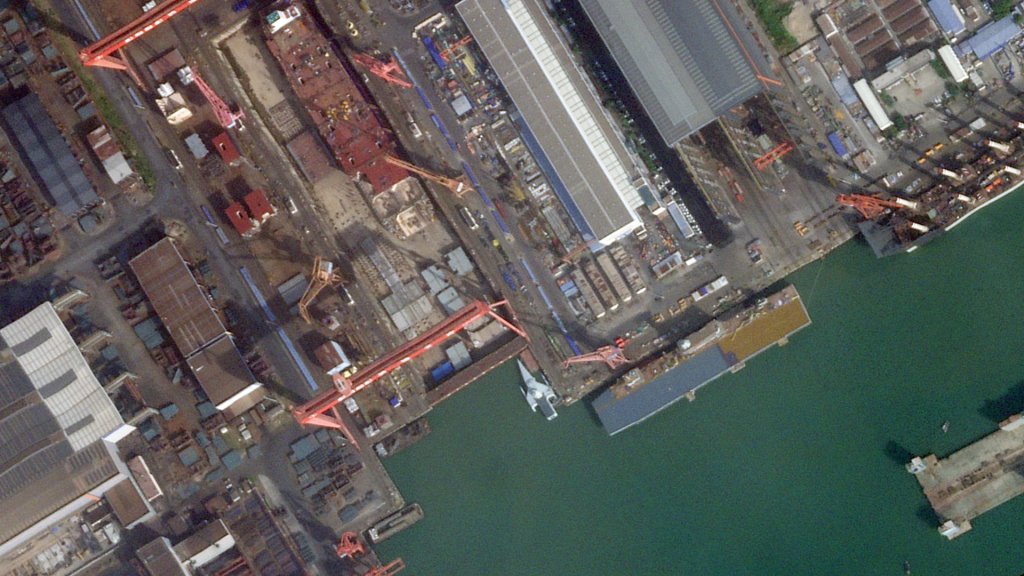
In addition to a picture showing a view from the rear, two images of the USV shown from the side have emerged that look to have had the background edited out. There is a possibility these images could be further manipulated or be renders rather than real pictures.
The side views do show the USV with a four-cell vertical launch system (VLS) array in a relatively large and potentially modular open section on top of its main superstructure. There is also an array of windows at the front pointing to an optionally crewed capability.
The side images, as well as the rear aspect picture, also show a faceted integrated mast structure with an additional extension at the top. What looks to be a traditional rotating maritime navigation radar antenna, as well as multiple sensor turrets of the type typically equipped with electro-optical and infrared cameras, are visible on top. Those sensors would be needed just for semi-autonomous operation, including deconflicting with other ships at sea, in addition to surveillance and target detection/tracking type functions. Rectangular sections at various points lower on the mast structure point to at least the provisions for additional radars and electronic warfare/electronic support measures (EW/ESM) systems.
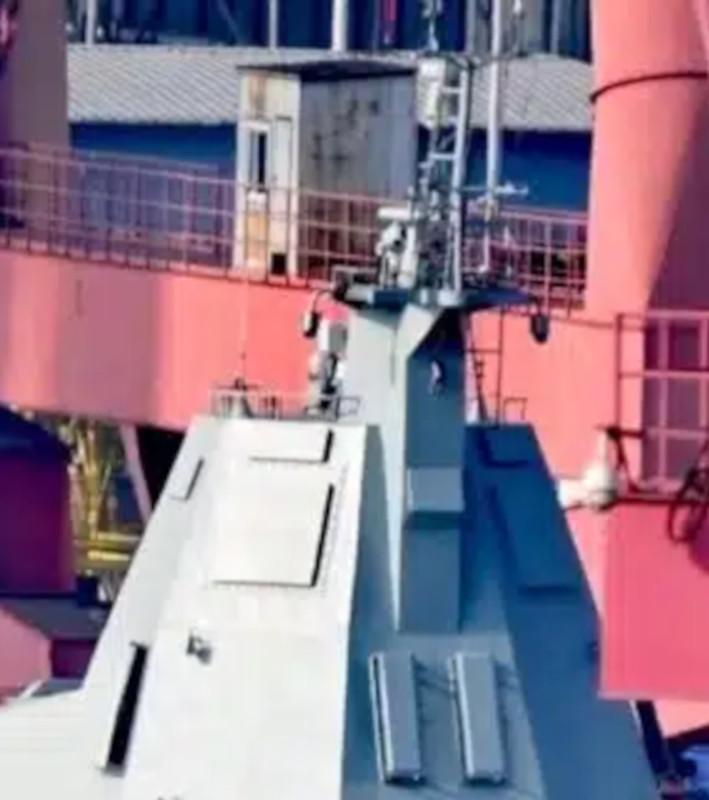
The USV also has a small flight deck at the stern configured to support a drone helicopter. Chinese aviation firms have been separately developing a growing number of uncrewed helicopters, including ones configured for naval applications.
Overall, the core shape of the mast and other portions of the ship’s external structure, at least, point to radar signature-reducing design considerations.
By all indications, the new Chinese trimaran USV is the JARI-USV-A, a 300-ton displacement design that has reportedly been under construction in Guangzhou since 2022. Huangpu Shipyard may be the actual builder, according to a recent report from Naval News. Huangpu and GSI are both subsidiaries of the state-run China State Shipbuilding Corporation (CSSC).
“JARI” in the name comes from the Jiangsu Automation Research Institute, which has also been involved in the development of a smaller 20-ton-displacement JARI-USV with a traditional hull profile. JARI was originally established as part of the state-owned China Shipbuilding Industry Corporation (CSIC), which CSSC absorbed in 2019.
Another unrelated trimaran USV design had previously emerged in China in 2020.
However, the USV now sitting in GSI’s yard differs in significant ways from models and renders of the JARI-USV-A that have been shown in the past, which notably featured an eight-cell VLS array in a much lower-profile main superstructure. The earlier design also had what looked to be torpedo tubes nestled in its side sponsons and a remotely-operated weapon system with gun and missile launchers that could be fully retracted into a section of the bow. Whether or not these features have been carried over to the newer design is unknown.
Armed with a mixture of missiles, torpedoes, and guns, the USV could help support anti-surface and anti-submarine warfare missions, with its drone helicopter helping to spot and track targets, as well as otherwise scout around for miles around the vessel. It could also be used as a network relay and kinetic platform, as well.
The USVs could also just offer valuable additional capacity to provide localized maritime presence, including around more far-flung outposts like China’s man-made islands in the hotly contested South China Sea. Its shallow draft would make it very well suited for operations in littoral areas. Similarly sized crewed Type 022 catamaran missile boats are among the assets the People’s Liberation Army Navy (PLAN) currently uses for those kinds of missions.

Whether or not the new USV is expected to be an operational platform, or just a testbed for future developments, is unclear. Naval News posited that the trimaran drone ship, as well as the new carrier-like ship in GSI’s yard (which we’ve now seen curiously bears the CSSC company logo rather than clear naval-style markings), could be more experimental in nature and also intended in part to help with export pitches to foreign navies. Similar questions have been raised about exact intended purposes of the trimaran USV design that previously emerged in China, as well as a new stealthy crewed corvette design that first broke cover in the country last year.
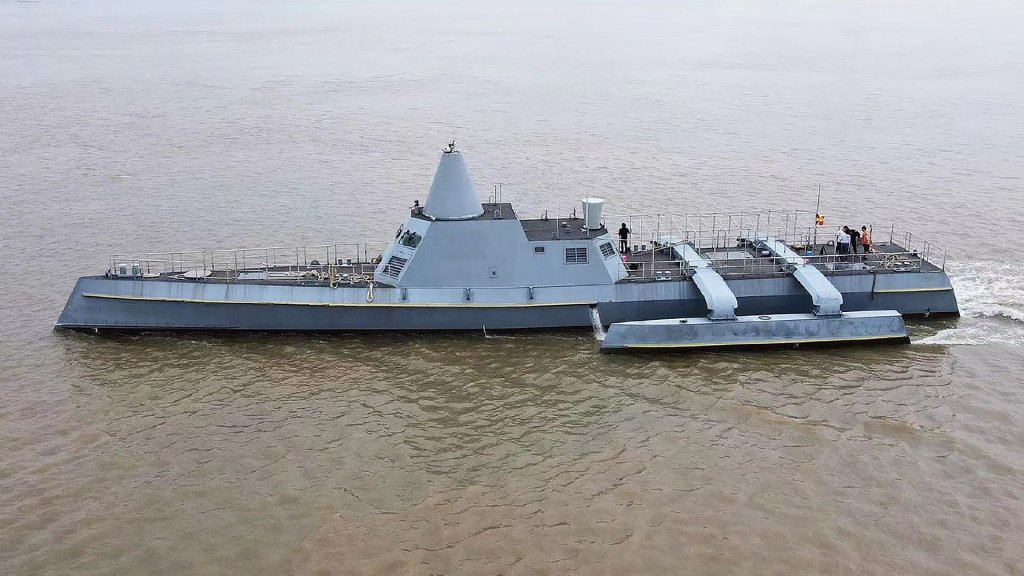
The PLAN certainly does have a history of building bespoke vessels ostensibly for research and development, test and evaluation, and training roles. At the same time, from what we have now seen, the new USV has a configuration that is at least potentially operationally representative and that could point to the possibility of a future fleet of operational drone ships based on this design.
Even if the new trimaran drone ship is ostensibly a test platform, it underscores the PLAN’s clear ambitions (and those of the rest of the PLA) to increase its uncrewed capabilities across all domains. The PLAN has been very actively working to expand the scale and scope of its crewed surface warship and submarine capabilities in recent years, backed by China’s substantial shipbuilding industrial base.
In this broader context, it is also worth noting that China’s public interest in trimaran USVs emerged following the U.S. military’s highly successful work with a design called Sea Hunter. The U.S. Navy still has that USV, as well as a second example named Seahawk, but has so far not moved to acquire more of them for operational use. The service has been working to operationalize other USVs in recent years, but the main focus has been on smaller and less capable designs.
Testbed or not, the new Chinese USV is the latest evidence the country continues to push ahead with its own increasingly more advanced uncrewed naval capabilities.
UPDATE: 11/10/2024 —
We now have full images and video of the ship underway:

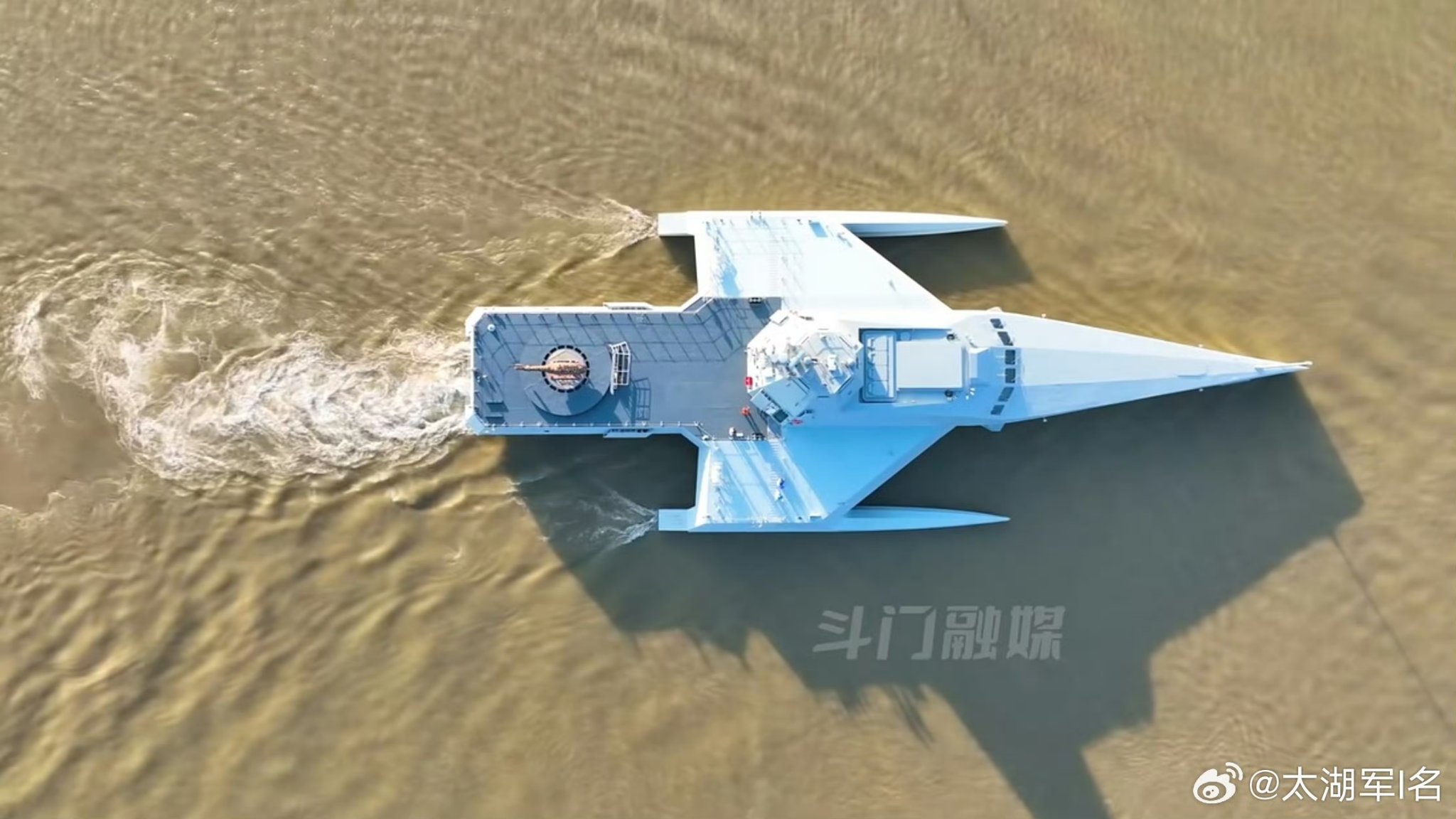
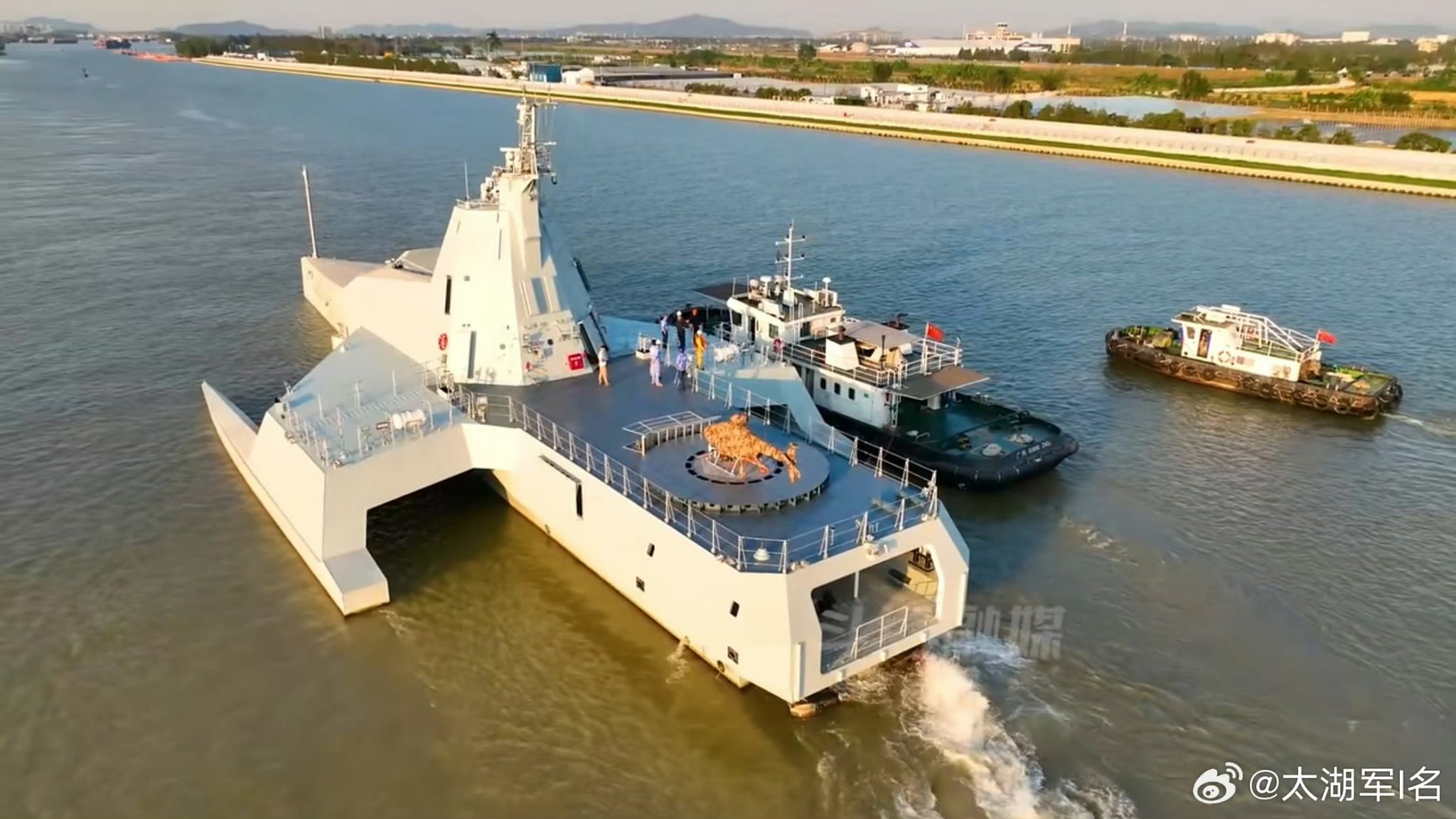
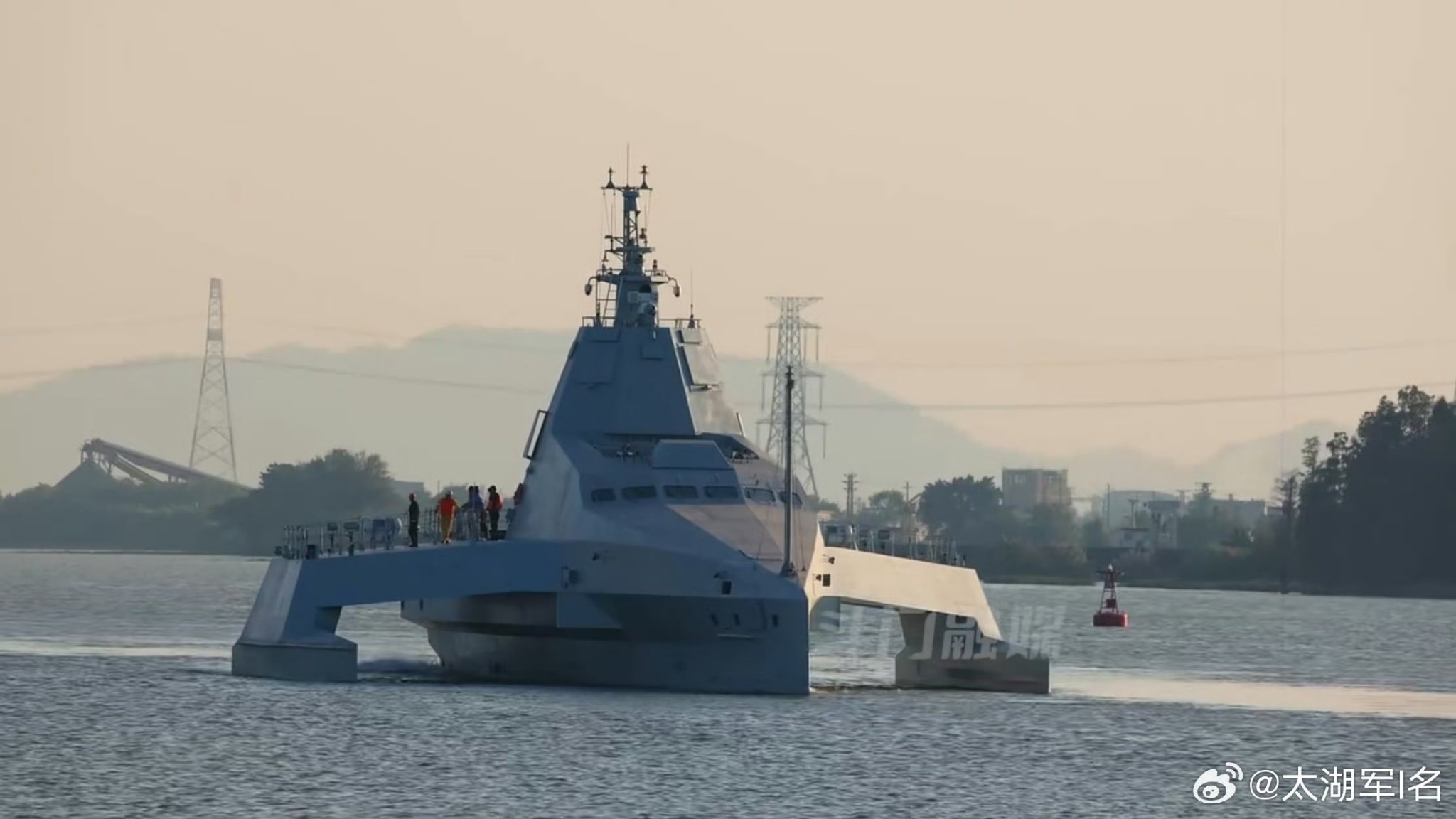
Contact the author: joe@twz.com
